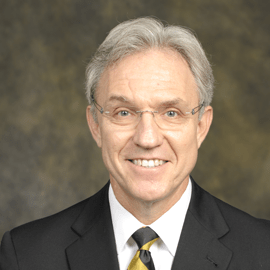
Memorializing Crisis through Renewal
The Oklahoma City National Memorial provides an example for how memorials can create a prospective vision that inspires renewal. The healing power of shared grief allows visitors to look beyond the tragedy to see the optimism encouraged through a focus on renewal. Establishing shared values, finding optimism, and providing an opportunity for learning are practical steps for community leaders and communication practitioners who wish to establish renewal through the memorializing process.
On April 19, 1995, Timothy McVeigh and Terry Nichols bombed the Alfred P. Murrah Federal Building in Oklahoma City, killing 168 people. In the midst of anger, confusion, and devastating sadness, condolences from across the nation and around the world began pouring into Oklahoma City. Within hours after the bombing, makeshift memorials were created around the perimeter of the bombsite. Spontaneous, informal memorials develop from the simple need to communicate the pain that those left behind feel, and to let others see and share in the grief. This union of compassion can also be seen in memorial services such as candlelight vigils organized in the wake of a tragedy.
Such commemoration allows those touched by the tragedy to communicate their grief and take comfort in the shared experience of loss. Deep-seated motivations for memorial creation assist in the symbolic transformation of a place of death and loss into sacred ground. However, designing a memorial that communicates to future generations comprised of people with limited or no memory of the event is particularly challenging. Yet doing so is essential because memorializing requires moving beyond simply marking an event to include signifying that event for future generations.
In Oklahoma City, ideas and plans for a permanent memorial were sent to then-mayor Ron Norrick within 24-hours of the bombing. Professional artists and their agents, design firms, and monument companies offered their services and countless individuals sent letters describing the “vision” for the memorial they received in a dream; many offered to bear all costs of constructing the memorial if given artistic freedom in its design. To manage the memorial development process, Mayor Norick appointed a 350-person Memorial Task Force, including 10 operational committees, a coordinating committee, and a 160-person advisory committee. Considering committees of four-six individuals often have trouble coming to a decision, coordinating a task force of that size at the height of emotional anguish must have been a daunting task.
And yet, in less than a year the Memorial Task Force unanimously approved the mission statement now inscribed at the memorial’s entrance:
We come here to remember those who were killed, those who survived and those changed forever. May all who leave here know the impact of violence. May this memorial offer comfort, strength, peace, hope, and serenity.
Every element of the memorial reflects, in some way, at least one of the seven themes laid down by the Memorial Task Force in the full mission statement. These themes – remembrance, peace, spirituality and hope, cherished children, comfort, recognition, and learning – are embodied in the features of the memorial, shaping the feelings and experiences of visitors to the memorial and ensuring they will be positive, healing feelings.
Our research finds that memorials constitute complex messages based on language, context, and visual symbols that simultaneously address the past, present, and future.
Memorials are therefore intended not only as an expression of grief in the face of loss, but also as a means to help ease this grief through recognition of the event and an attempt to learn from it. We suggest that the process of sifting out the positive experiences and learning opportunities inherent in tragedy is evidence of renewal. Renewal alleviates the constraints associated with issues of blame and fault and in their place offers hope and optimism where initially there is none. We further contend that the creation of the Oklahoma City National Memorial so soon after the Murrah Federal Building bombing served as a healing catalyst for some families and survivors, while the resulting memorial invites survivors, residents of Oklahoma City and all who visit to engage in renewal. Emphasizing shared values, finding optimism, and providing opportunities for learning are identified as practical steps toward achieving a prospective outlook.
The memorial creates a context of peace and comfort that allows visitors from across the country and all over the world to remember the victims and experience the emotional healing that is a universal component of the indomitable human spirit. Healing leads to finding optimism in the midst of tragedy. Similarly, the values openly expressed in the memorial address both the sense of loss felt in Oklahoma City and the perpetual and universal values of community and dedication. As visitors to the memorial relive the crisis through the memorial, they are invited to reconnect with values focusing on children, spirituality—hope, and the selfless dedication of the many who served as first-responders and volunteers. In doing so, the memorial affirms the resilience of these values.
The Oklahoma City National Memorial’s commitment to conveying lessons of the senselessness of violence and the viability of peaceful resolution to conflict is clearly fitting with renewal. An optimistic, prospective focus is established, characterizing the crisis as a starting point, rather than an ending, and thereby emboldening the community to endure in the wake of hardship. Thus, by focusing on renewal, the Oklahoma City National Memorial has lasting relevance for visitors now and far into the future.



